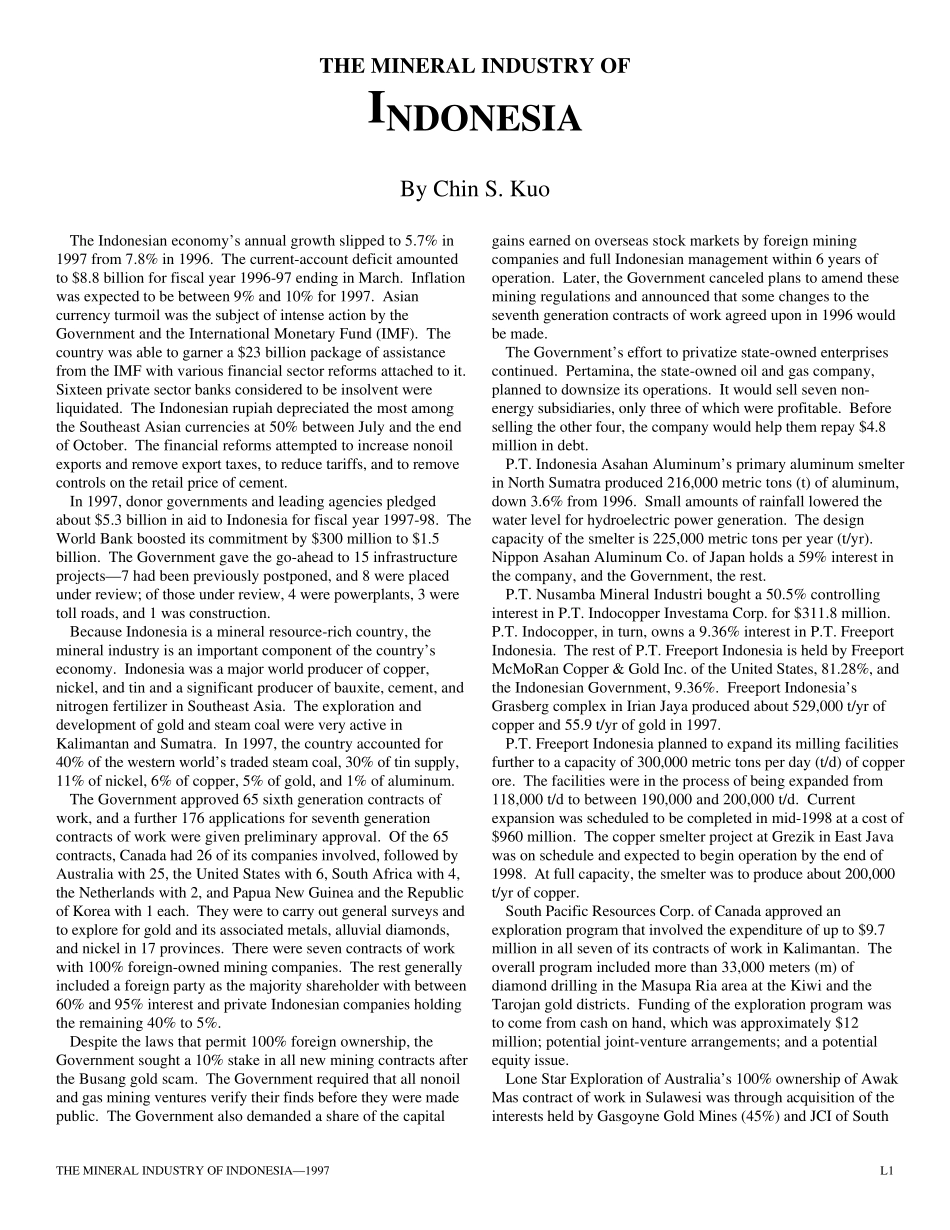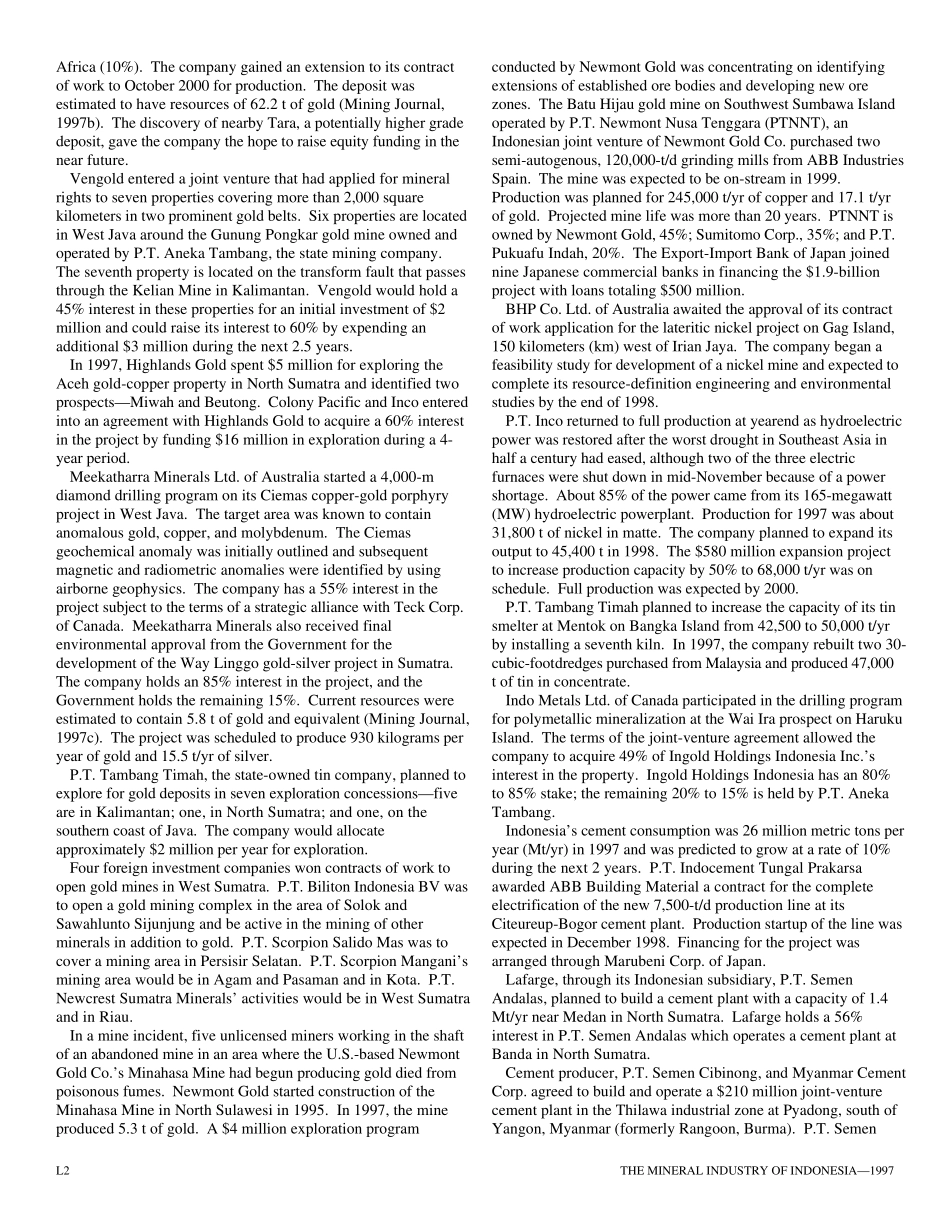THE MINERAL INDUSTRY OF INDONESIA—1997L1THE MINERAL INDUSTRY OFINDONESIABy Chin S. KuoThe Indonesian economy’s annual growth slipped to 5.7% in1997 from 7.8% in 1996. The current-account deficit amountedto $8.8 billion for fiscal year 1996-97 ending in March. Inflationwas expected to be between 9% and 10% for 1997. Asiancurrency turmoil was the subject of intense action by theGovernment and the International Monetary Fund (IMF). Thecountry was able to garner a $23 billion package of assistancefrom the IMF with various financial sector reforms attached to it.Sixteen private sector banks considered to be insolvent wereliquidated. The Indonesian rupiah depreciated the most amongthe Southeast Asian currencies at 50% between July and the endof October. The financial reforms attempted to increase nonoilexports and remove export taxes, to reduce tariffs, and to removecontrols on the retail price of cement.In 1997, donor governments and leading agencies pledgedabout $5.3 billion in aid to Indonesia for fiscal year 1997-98. TheWorld Bank boosted its commitment by $300 million to $1.5billion. The Government gave the go-ahead to 15 infrastructureprojects—7 had been previously postponed, and 8 were placedunder review; of those under review, 4 were powerplants, 3 weretoll roads, and 1 was construction.Because Indonesia is a mineral resource-rich country, themineral industry is an important component of the country’seconomy. Indonesia was a major world producer of copper,nickel, and tin and a significant producer of bauxite, cement, andnitrogen fertilizer in Southeast Asia. The exploration anddevelopment of gold and steam coal were very active inKalimantan and Sumatra. In 1997, the country accounted for40% of the western world...


